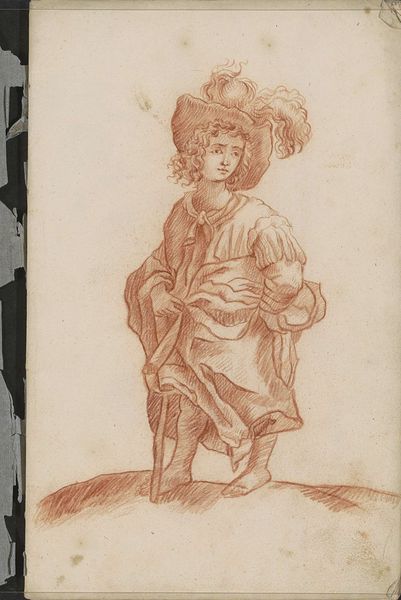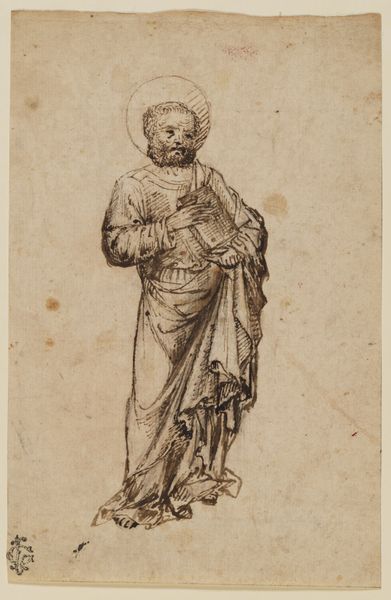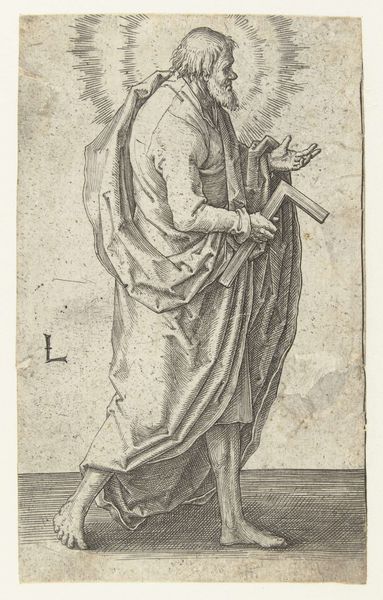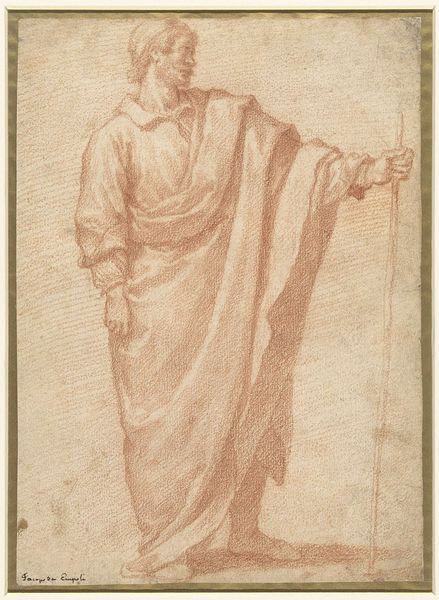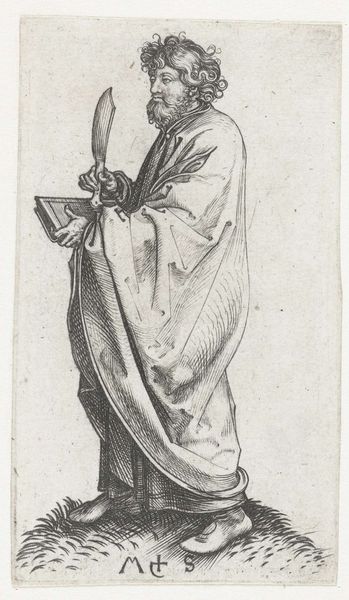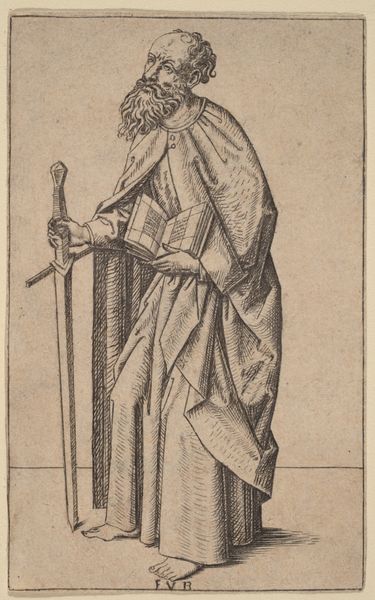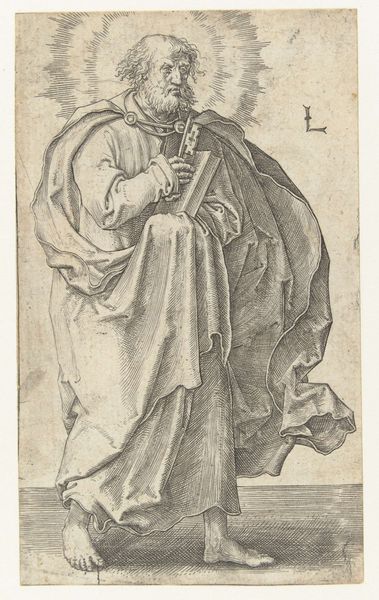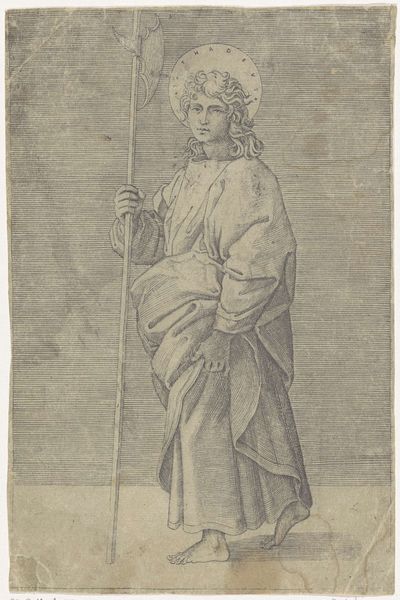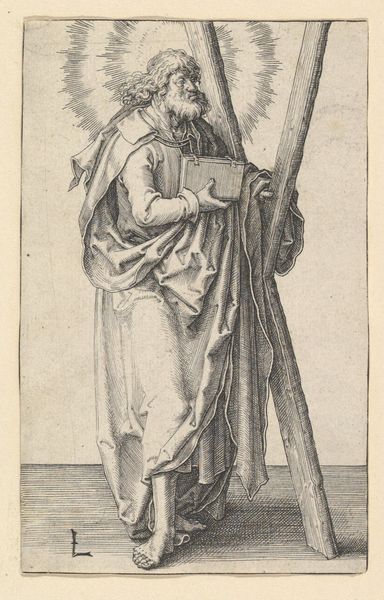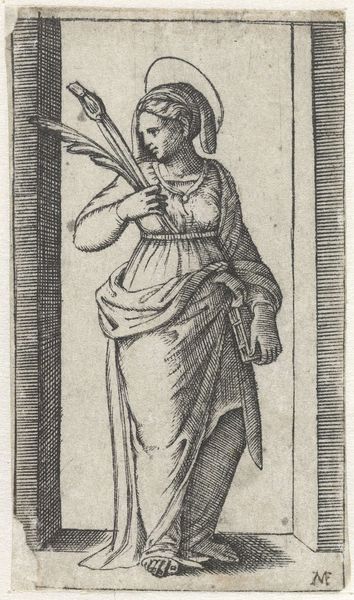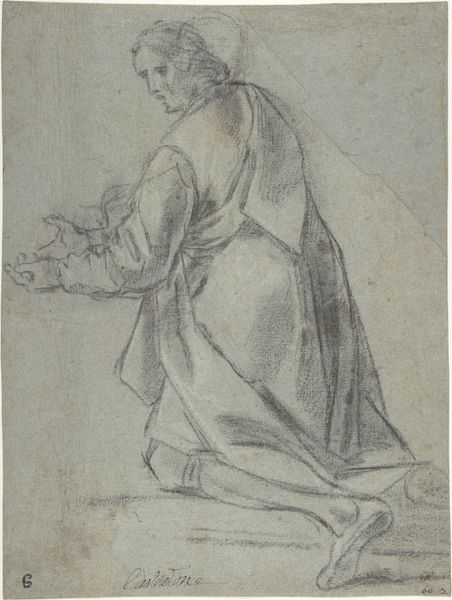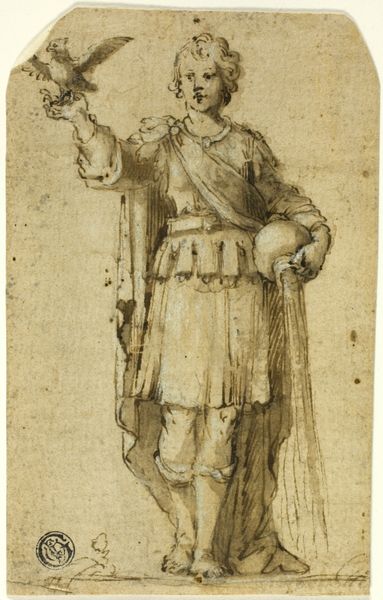
drawing, pencil
#
portrait
#
drawing
#
baroque
#
pencil sketch
#
charcoal drawing
#
figuration
#
pencil drawing
#
pencil
#
portrait drawing
#
pencil work
#
history-painting
Copyright: Rijks Museum: Open Domain
Editor: Here we have Hendrick van Beaumont's "Apostel Judas Thaddäus met lans," or "Apostle Jude Thaddaeus with Lance," a pencil drawing from 1696. The figure almost glows. What can you tell me about it? Curator: It shimmers, doesn't it? Like a half-remembered dream of faith. I find myself drawn to the radiant halo – almost bursting with light, a vibrant sunflower. But the overall impression isn't quite celestial. See how Beaumont grounds him? Solid, almost stubborn, perched on that earthly ledge. The Baroque loved these kinds of dualities. Divine figures with distinctly human qualities, contemplating earthly problems. Editor: That's interesting. What would you say he's contemplating? Curator: Ah, the eternal question. The lance certainly speaks of conviction, even a readiness to defend the faith. Yet his gaze seems inward, thoughtful. Perhaps he is considering the weight of his convictions? I wonder what the choice of materials—a sketch rather than a painting—might reveal about van Beaumont's process and intentions? Is it preparatory or a finished idea? Editor: It’s curious to see that raw, sketch-like quality. I would expect something grander. Curator: Perhaps that's the charm. It invites us into the artist’s mind, allows us to participate in the creation, as though the drawing isn’t complete without our contemplation. Editor: I never considered that, viewing it almost as a behind-the-scenes snapshot. Curator: Exactly. So next time you see an artwork, wonder, what does this artwork want from me? It can make for a surprisingly insightful visit.
Comments
No comments
Be the first to comment and join the conversation on the ultimate creative platform.
